
Fascism comes in all shades, including ‘green’. Marching around and telling other people what to do, makes the green fascist no different than the jackbooted kind, of old.
Where the green fascist differs, is in his ability to pontificate from the high moral ground, while engaging in every act he so vocally despises.
Which brings us to Bob Brown.
Dr Bob has called in an airstrike on his own position, with the media having a field day with his very sudden about face on wind power.
The former head honcho for the Australian Greens is now guilty of precisely the charge he’s been laying at the feet of oppressed rural folk for years.
Bob and his ilk scream N-I-M-B-Y whenever ordinary Australians jack up about the idea of having a few hundred 300 tonne plus, 270 m whirling wonders speared into their patch of paradise. Always happy to throw his compatriots under a bus, now Bob Brown is screaming blue murder about a few wind turbines being lobbed into a remote corner of his home State, Tasmania.
Over the next few posts, STT will give a roundup of the media surrounding only the latest burst of green hypocrisy. Enjoy!
Crusader Brown turns against wind farm
The Australian
Graham Lloyd
15 July 2019
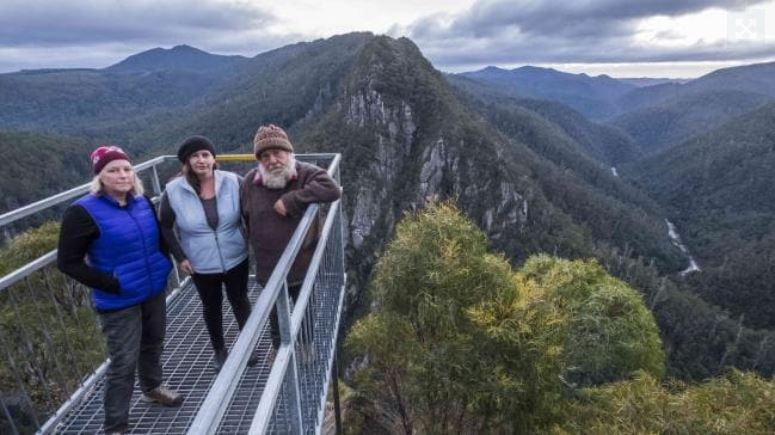
Former Greens leader and veteran activist Bob Brown is campaigning to stop a $1.6 billion wind farm development in Tasmania because it will spoil the view and kill birds.
The proposed Robbins Island wind farm in Tasmania’s northwest will be one of the world’s biggest, with up to 200 towers measuring 270m high from ground to blade tip.
If it goes ahead, electricity from the Robbins Island project will be sent to the mainland via a new undersea cable to help make Tasmania a “battery for the nation”.
But in a letter to local media and on his foundation’s website, Dr Brown has slammed the project, which he said had echoes of earlier attempts to build skyscrapers in Hobart which were stopped by protests.
Despite the criticisms levelled at former prime minister Tony Abbott and treasurer Joe Hockey for describing wind turbines as “ugly”, Dr Brown said the Robbins Island plan was, visually, a step too far. “Mariners will see this hairbrush of tall towers from 50km out to sea and elevated landlubbers will see it, like it or not, from greater distances on land,” Dr Brown said. “Its eye-catchiness will divert from every coastal scene on the western Bass Strait coastline.”
Dr Brown, who fought against Queensland’s Adani coal mine, said the world needed renewable energy to replace fossil fuels, and fast, but the Robbins Island wind farm “is an aileron too far”.
He said the public had not been properly informed of the private deals, or public impacts or cost-benefit analyses (economic, social, cultural and environmental) of what would be one of the biggest wind farm projects on Earth. He said details of the arrangements between the Hammond family, which farmed wagyu beef and owned the land, and developer UPC Renewables were not known. “Tasmanians have a right to know much more about the Robbins Island development,” Dr Brown said. “It is a huge resource extraction venture which will be lighting up no Tasmanian homes.”
Dr Brown’s opposition is shared by some locals, including the Nietta Action Group, which is fighting both the wind farm and a transmission line.
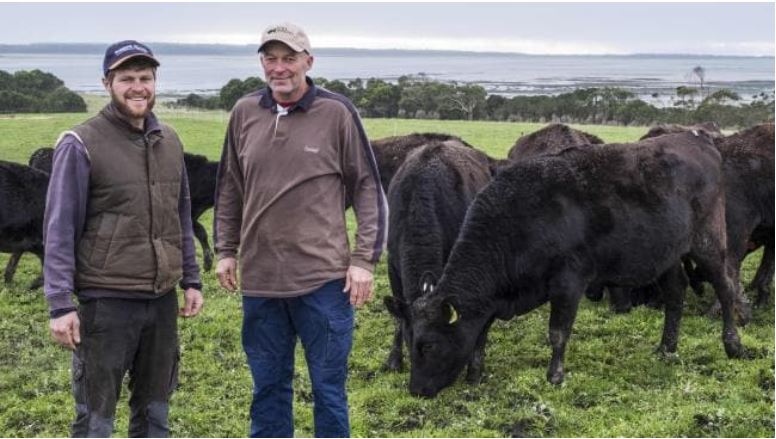
Members of the Nietta Action Group told The Australian last month that natural values would be destroyed if the planned transmission line across Leven Canyon went ahead. Others have raised concerns about whether a walled causeway to the island, as part of the project, would interrupt tidal flows, damaging the vital sandflat ecosystems.
However, Anton Rohner, chief executive of UPC Renewables, and the Hammond wagyu beef farming family, last month told The Australian expert modelling suggested several bridge sections in the causeway would avoid adverse impacts.
“We are cattle people; we love the environment,” said Alex Hammond. “Part of our brand, which sells our beef around the world, is that we are in the cleanest, greenest area in the world.
“So we certainly don’t want to do anything to impact on that.” Dr Brown sparked anger in central Queensland during the election campaign when he led a convoy of anti-coal activists to coalmining towns in protest against the Adani coalmine. The intervention was credited by some pundits with driving voters away from Labor and to the Coalition in the May 18 election.
In his letter on the wind farm, Dr Brown wrote: “Besides the impact on the coastal scenery, wind turbines kill birds. Wedge-tailed eagle and white-bellied sea eagles nest and hunt on the island. Swift parrots and orange-bellied parrots traverse the island on their migrations.”
He listed the multiple species of international migratory, endangered and critically endangered shorebirds that used the wetlands for six months of the year. They included Australian fairy tern, fork-tailed swift, little tern, white-throated needletail, ruddy turnstone, sharp-tailed sandpiper, sanderling, red knot, curlew sandpiper, red-necked stint, great knot, double-banded plover, greater sand plover, lesser sand plover, Latham’s snipe, bar-tailed godwit, eastern curlew, whimbrel, golden plover, grey plover, grey-tailed tattler, common greenshank, terek sandpiper, hooded plover.
“For which of these species will the wind farm be the thousandth cut?” Dr Brown asked.
He said the transmission lines for the wind farm were planned to cut through wild and scenic Tasmania, including the northeast Tarkine forests, to link up with a new export cable beneath Bass Strait. “In the name of private enterprise, why not UPC build its own cable under the Strait from Robbins Island straight to wherever,” Dr Brown said.
UPC said the project was located close to the Australian Energy Market Operator’s (AEMO) proposed second interconnector between Tasmania and Victoria.
“Once built, it will complement the Prime Minister’s recently announced strategy for Tasmanian wind and hydro systems to act as southeast Australia’s renewable energy battery,” the company said. The project faces local and federal regulatory hurdles and unrest about the citing of both the Robbins Island wind farms and the transmission line. Dr Brown said Tasmania already had more than enough electricity to meet its own needs and UPC was a multinational corporation with projects in China, The Philippines and Indonesia.
“Beyond the indisputable environmental losses, what is the guaranteed money this giant venture is returning to the state of Tasmania as against UPC’s foreign stakeholders?’’ he asked.
The Australian
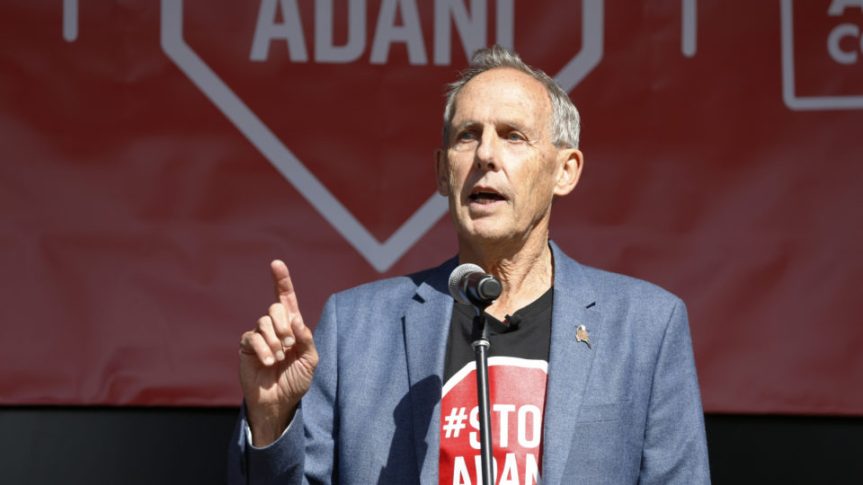
Greens exposed as Bob Brown baulks at turbines in his backyard
The Australian
Graham Lloyd
16 July 2019
Environmental crusader Bob Brown has exposed a conspiracy of silence by the Greens and their supporters on the true cost and unintended consequences of renewable power.
Dr Brown yesterday stood by his comments slamming a proposed $1.6 billion Robbins Island wind farm in Tasmania’s northwest. The response from the Greens party and environment groups to Dr Brown’s outburst was as quiet as a wind rotor on a dead-calm day.
The Greens and Australian Conservation Foundation refused to criticise either Dr Brown or the project, slated to be one of the biggest wind farms in the world if it goes ahead.
In the past, federal Greens leader Richard Di Natale has likened investigating complaints about wind farms and noise to taking seriously alien abductions.
He refused to support the appointment of a wind farm commissioner to handle public complaints. His staff yesterday said he did not wish to comment on his former leader’s protest.
A spokesman for the ACF said “we don’t have a view” when asked about Dr Brown’s objections to the project. “We don’t know enough about it,” he said.
The ACF “can’t say definitely either way” if it had ever objected to a wind farm development.
Political adversaries criticised Dr Brown for displaying not-in-my-backyard (NIMBY) hypocrisy in warning against the Robbins Island plan, but bird lovers who have been fighting wind farm developments across Australia for a decade would like the anti-development, anti-coal powerhouse to extend his concerns beyond Tasmania. When Hamish Cumming tried to interest Dr Brown’s foundation in the plight of Victoria’s endangered brolgas, which he says are threatened by wind farms, he was ignored.
By publicly opposing the Robbins Island development, Dr Brown has unleashed a decade of pent-up frustrations of nature lovers who fear industrial-scale projects are transforming rural Australia for the worse.
Dr Brown yesterday defended his fight against the wind farm proposal, which he compared to the Franklin Dam. The Hong Kong-based UPC Renewables Robbins Island and Jim’s Plain Renewable Energy Parks project will be one of the world’s biggest renewable energy developments.
It will include up to 200 wind towers, each stretching 270m from the ground to rotor tip.
Electricity generated from the project will be exported to the mainland via a new interconnector as part of the “battery for the nation” project supported by the federal government.
To get to the interconnector, electricity from the wind and associated solar farms must travel through some of the most spectacular scenery in the region.
The project is also located in a significant area for raptors and migratory birds. UPC said it had been conducting eagle surveys, with white-bellied sea eagles and Tasmanian wedge-tailed eagles nesting on Robbins Island.
The company said there would be a 1km exclusion zone around each nest
Dr Brown shocked many with his public protests against the development because of its visual impacts and the threat the massive windmills pose to birdlife. “I’m a big supporter of renewable energy and energy efficiency but this massive wind farm goes too far,” he said. “It’s comparable to the Franklin Dam for hydro-energy … you have to look to the environmental, economic and social consequences of this wind farm.”
Dr Brown said as well as the environmental impacts, he was concerned profits from the project “will not go to Tasmanians, but to the multinational building it”.
Emissions Reduction Minister Angus Taylor yesterday said: “This is a classic case of Greens’ hypocrisy. The Greens love nothing more than to lecture Australians about their preferred source of energy generation, but when it’s in Bob Brown’s backyard, wind farms are suddenly a bad idea.”
Tasmanian Liberal senator Eric Abetz ridiculed Dr Brown’s protests. “Consistency, integrity and facts are the three ingredients regularly missing from Bob Brown’s advocacy,” Senator Abetz said.
“And if he still believes in his slogan of ‘think globally, act locally’, the fact that the energy produced from the Robbins Island wind farm would be exported from Tasmania is irrelevant.”
The Australian
Truth of renewables is plain for all to see
The Australian
Graham Lloyd
16 July 2019
As city slickers have urged governments to pursue bigger and faster renewable energy targets, the impact has largely been taking place out of sight and out of mind.
Bob Brown’s alarm at the proposed Robbins Island development may be a sign that reality finally is starting to bite. On paper, emissions-free electricity from renewables is great.
In reality, it often means the transformation of once quiet and scenic rural areas into industrial zones with visual impacts and potentially hidden perils.
Complaints about wind farms in particular have been widespread and are not confined to Australia.
New onshore wind-farm developments are effectively banned over large parts of Europe.
In Australia, complaints have been persistent enough for a federal Senate inquiry to be held and for a wind-farm commissioner to be appointed.
Not everyone is happy but the wind-farm commissioner says the number of complaints is falling.
Many, however, are forgoing bureaucracy and have elected to seek their remedy in the courts.
Class actions over noise complaints and rural lifestyle interference could soon become a growth industry.
But as renewable energy investment has stalled elsewhere, in Australia it has gathered pace in scale and geographic spread.
The new breed of wind-farm developments are quite different to the early ventures. For Robbins Island, the wind-farm towers and blades will stretch 270m into the air. Not long ago, 100m was considered big.
As the size of turbines has increased, the developments have moved away from what once was promised to be community scale.
All of the electricity generated at Robbins Island will be transported to the mainland.
Plans are afoot for projects that will supply electricity from Australia to Asia.
Other developments envisage bottling solar and wind energy as hydrogen for export.
Dr Brown finally seems to have realised that wind farms can be industrial facilities more interested in making money than saving the world. And the impact they have is not always benign.
Dr Brown is right to fear the impact massive wind-farm projects can have on birds, particularly shore birds and raptors.
He is correct to question whether the interruption to rural landscapes can easily be justified.
A project has got big enough and close enough that a father of conservation, Dr Brown, can no longer ignore it.
If Australia is preparing to debate the merits of emissions-free nuclear energy, the reality of renewables is the foundation on which it must be built.
The Australian
Brown gets real on wind power
The Australian
Editorial
16 July 2019
Former Greens leader Bob Brown’s criticism of a proposed $1.6 billion Robbins Island wind farm development in Tasmania is a welcome admission that when it comes to energy, everything has its price. By questioning the project on visual, environmental, social and economic grounds, Dr Brown has opened himself up to accusations of being a nimby hypocrite. But he is simply calling for a level of scrutiny for the Robbins Island project that has often been missing in the blind championing of renewable energy projects by environmental groups and state planning departments.
It is ironic that this objection to a wind farm proposal has come from Tasmania, the home of the Franklin Dam protests that crimped the real battery-of-the-nation prospect, hydropower. There is a tinge of xenophobia, too, in Dr Brown’s complaint that the wind farm proponent, Hong Kong-based UPC Renewables, is foreign owned and that the power generated will not be used in Tasmania. Most telling is the fact that the concern shown by Dr Brown and his fellow environmentalists for the Robbins Island project has been conspicuously absent in regard to projects outside their immediate surrounds. With up to 200 towers measuring 270m from base to blade tip and high transmission lines cutting their way through visually stunning and protected landscapes, Dr Brown is seeing the wind farm proposal for what it is. That is, a massive industrialisation of a previously rural setting.
Too often such concerns have been rejected by green groups as subordinate to the bigger demands of a so-called climate emergency. Small communities in South Australia, Victoria, NSW and Queensland have been raising the same objections about poorly considered industrial projects in rural settings for years and most often have been ignored. Many have said the only way industrial-scale wind projects will be recognised for what they are is when they are located along the metropolitan coastlines of major cities. Manly Beach in Tony Abbott’s former Warringah electorate springs to mind.
Dr Brown, perhaps inadvertently, has raised issues concerning the rush to renewables that have been begging to be addressed. These include the impact of major projects on local communities and the environment. International experience shows the need for proper investigation of complaints by neighbours about noise and loss of amenity. Beyond the wind farms is the cost and visual impact of transmission lines. Dr Brown cited spoiled views from land and sea and the impact the project might have on bird populations as major concerns.
The wind industry and its supporters have been keen to downplay the impact of turbines on bird populations. But evidence is mounting the turbines are far from benign, particularly for birds of prey, insects and migratory species. The bottom line is that renewable energy projects require large areas to harvest a low-density source of energy. As a result, political demands for big renewable energy targets are loaded with potential for unintended consequences. This includes the reliability of power supplies as well as high environmental and economic costs. Whatever the merits of the Robbins Island plan, Dr Brown has done everyone a favour by highlighting the fact that support for a renewable energy future has its limitations.
The Australian

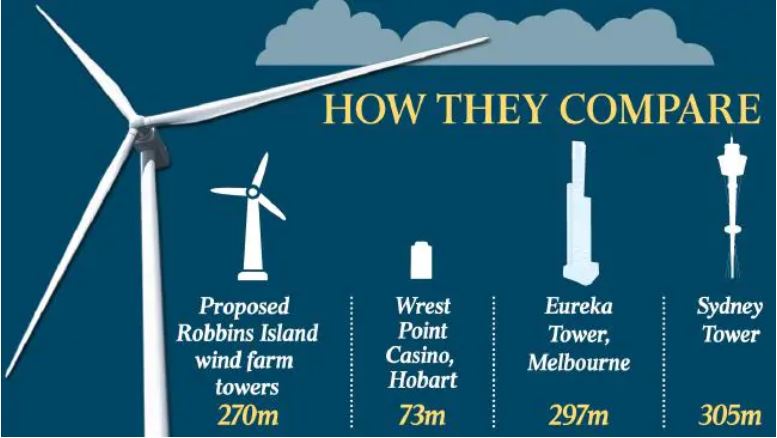
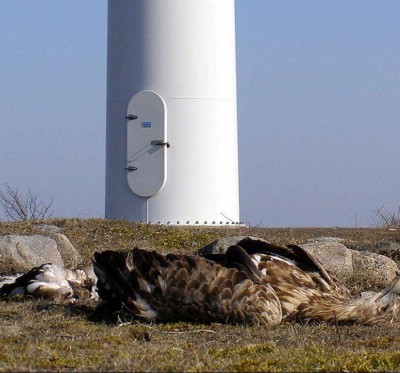


While Brown decided to raise his voice re Robbins Island he shunned his high moral ground with respect to Woolnorth and its Wedge tailed Eagles, nor was he heard objecting to Granville Harbour when 200yr old trees were removed, nor did he raise an eyebrow over the plight of the Critically Endangered Orange Bellied Parrot which travels through the area, or even the plight of the Tasmanian Devil there.
Maybe these things weren’t worth his attention because these projects weren’t big enough to garner him any interest from the media. But they surely should have been on his radar as all such projects should be.
If he is the environmental worrier he claims to be he should be out there crying foul every time one of these projects is proposed because none of them are benign, everyone has the propensity to cause damage to our environment and all that lives within it. Even if its ‘only’ that they remove land and air space available for creatures to live and prosper in.
Yes, we’re happy that his sudden awakening has shone a light on the Robbins Island danger, but as he seems to pick and choose which ones he will fight, can he a true environmentalist or does he just appear to be a self serving wannabe.
At last the true colours of bob brown and his cohorts is
apparent. What about the people that have to tolerate
these things 24/7
What a laugh! Bob Brown protesting against wind turbines in his own backyard. Is he really admitting being against the Franklin Dam was a mistake?
Then off he goes to his holiday cabin that’s all wood fired. But solar arrays on otherwise productive farmland is OK, then he ‘boils it down’ to money – Tariff protection for Tassie?
The Franklin Dam protest included another forelock tug to the British monarchy by the late Bob Hawke.
Talk about hoisted with their own petard ; Uncle Tom Cobly an’ all.
At least five major ice ages have occurred throughout Earth’s history: the earliest was over 2 billion years ago, and the most recent one began approximately 3 million years ago and continues today (yes, we live in an ice age!).
Polar reversal; Earth’s magnetic field has varied widely over time. 72 million years ago, the field reversed 5 times in a million years.
99.9% of all species that have ever existed are extinct.
So what exactly is a ‘natural pristine’ environment?
As the ACF was protagonist in having humans classified as pests like cane toads, it must mean our extermination.
With “an aileron too far” is Bob Brown alluding to ‘come fly with me’?
Another question is will the new link cable(s) have to wait so long for Italy to repair them like when the last one broke and all the profit went on diesel fuel?
Unlike the Queensland Adani coalmine protest it’ll have to be a row boat one this time.
But hey, we all felt much safer with nuclear powered USS Ronald Reagan in Brisbane.
Some might be worried it’s a risk to the Great Barrier Reef though.
That picture with the Eagle killed at Waterloo was the last Wedge Tail Eagle seen at the Waterloo wind farm.
Reblogged this on ajmarciniak.
Corruption by ideas is described here, but could corruption by money be added to explain the Greens’ position?
Reblogged this on Climate- Science.